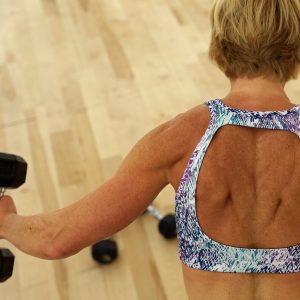Healthy eating can be a good thing—Until it isn’t. Here’s how to tell when a focus on clean, nutritious or organic fare can be, believe it or not, hazardous to someone’s health.
It’s all there on Instagram—more than 34 million posts tagged #cleaneating and 46 million-plus tagged #eatclean. And it’s undeniably one of the biggest food trends of the moment: so-called “clean” diets embracing healthy, pure and organic meals. The trend reflects a reasonable desire to know where our food comes from and to feel reassured that it is toxin-free and, ideally, ethically produced.
The clean-eating movement is everywhere on social media, and the internet is full of programs, e-books and cleanses that promise to purify your system. Clean-eating social media stars have hundreds of thousands of followers, making them marketing attractions.
All this hubbub can’t help but raise questions.
“What is the opposite of ‘clean’ food—‘dirty’ food?” asks Stefania Palmeri, MHSc, RD, with Medcan, a preventive health clinic in Toronto. We don’t have a clear definition of clean eating, but we do have a raft of opportunists profiting from it. The mass of attention on clean eating demands that wellness and fitness pros pay attention. And all this raises another important question: What happens when people develop an unhealthy fixation on healthy food?
Another Kind of Disordered Eating
Bulimia and anorexia have a cousin called Orthorexia Nervosa—a pathological obsession with “proper” nutrition, characterized by a restrictive diet, ritualized eating patterns, and rigid avoidance of foods seen as unhealthy or impure (Koven & Abry 2015). Such tight dietary restrictions are not healthy.
“There should be no rules around eating,” Palmeri says. “Nutrition is a puzzle, and when you take pieces of the puzzle out, you are in danger of not getting the right nutrients you require for daily living.”
Steven Bratman, MD, MPH, coined the term Orthorexia Nervosa in 1996. He also developed a list of questions he asked patients to determine if their desire to be healthy had become obsessive (see “The Picture of Health—or Rigidity?”). The condition has not been classified as an eating disorder in the Diagnostic and Statistical Manual of Mental Disorders, but it is an authentic dietary and psychological phenomenon that health and fitness pros in particular need to know about.
“Orthorexia is one of the hardest disorders to diagnose because it can be easily hidden under the guise of ‘healthy eating’ in the fitness and wellness world,” says Renee McGregor, MCC, RD, a leading sports and eating disorder specialist in the United Kingdom and author of Orthorexia: When Healthy Eating Goes Bad (Nourish 2017). “Individuals truly believe that their quest to eat clean will ensure they are purifying their bodies. It is this obsession with being pure that creates orthorexia. Individuals believe that following a particular method of eating, which usually involves removing food groups, is the best way to allow for everlasting health.”
Starving for (Instagram) Attention

Research shows that cases of orthorexia have been on the rise since 2005 (Koven & Abry 2015). Amy Dixon, creative manager of group fitness programming for Equinox, has seen orthorexia intensify in recent decades. “In our industry, it has become way more prevalent because of social media,” Dixon says. “Wanting to be Instagram-famous and posing with your smoothie, you have to ‘be that person,’ the persona of the lifestyle that you are trying to put out.
“People get paid a lot of money to do it, as well. I have had peers who, prior to a DVD shoot, will restrict themselves so much and will judge me that I’m not doing the same. They want me to play in the same playground. But I refused to subscribe to that. I have often thought that I would have gotten further ahead in the industry if I starved myself more, if I had the popping six-pack abs, but I didn’t want that life.”
Health at Any Cost
When does clean eating cross the line? And how thin is the line? Sondra Kronberg, MS, RD, co-founder of the National Eating Disorders Association, says she rarely sees orthorexia on its own. It is normally a cap on anorexia, bulimia or binge-eating disorder.
“An eating disorder is a genetic predisposition to be more obsessive, compulsive and rigid. These genetic traits meet the cultural message of the day. Historically, the cultural message was thin at any cost—now it is health at any cost,” says Kronberg. “Cleanliness, purity, exclusion and inclusion—those are the messages being sent to us culturally.”
Kronberg argues that fixating on health is becoming a kind of religion in our society. “If you think of the role of religiosity, it gives you community, family, a value system, routine and structure, somewhere to turn when you are feeling down. Now, we get that from our gym or our eating club. We go and get the shakes, and we talk about them. And the culture supports this: The organic section has come to the regular supermarket. Parents are schooled that they can’t give their kids foods with toxins, antibiotics. When do you go from a belief in whole and fresh food to a drive to perfection and an extreme? We live in an all-or-nothing culture,” she says.
Feeding on Misinformation
McGregor encourages a nuanced view of social media’s role in the rise of orthorexia. Because the condition enables people to control negative emotions and address low self-worth, she says, those with poor self-perceptions go looking for ways to help themselves feel better. “Images on social media feed into this, selling lifestyles from people as a method of eating that has helped them be successful and feel fantastic.
“But these claims are what vulnerable people want, and they don’t understand that the pursuit of happiness is not entangled in food, and is about working on themselves and learning to accept who they are,” says McGregor.
“My biggest frustration is with individuals who post on social media and have a huge influence and following, and while they are not sending out messages to harm people, they have no awareness of how their messages can be so dangerous to those who are vulnerable and susceptible to developing an eating disorder,” she says. “These social media influencers often have no qualification in nutrition but have used their personal story with no evidence that it can help someone else. I feel there has to be some responsibility to understand how actions can have severe consequences.”
Confronting the Risks
The consequences of orthorexia can include malnutrition and dangerous weight loss. Palmeri, the Toronto dietitian, says many people cut out food groups without understanding why because they have heard it worked for someone. “I had a client who was drinking almond milk, thinking that this was a protein source. When I told them it was basically water, they were shocked.”
Kronberg says orthorexia treatment can take years, and relapse rates are high because messages about healthy eating are so commonplace. “We used to take magazines out of our waiting areas in eating disorder clinics, but you can’t take away people’s phones. And one big difference between orthorexia and other eating disorders is that there is gender parity. We are seeing it in equal numbers in men and women.”
Roles Fit Pros Can Play
How do you approach someone who you believe might be suffering from orthorexia? As you’re not a trained professional in this realm and your scope of practice limits deep exploration, tread carefully. If you do wade into these waters, “your approach can’t be accusatory,” says McGregor. “It must be explorative.” Start with ‘I’ve noticed you are following this method of eating. Can you tell me a little bit about why you have gone down this path?’ This is a good way to start a conversation, as most people with orthorexia will be evangelical about their methods and be happy to talk to you about it.
“From here, you can explore more. You can ask them if they have energy to train and why they are eliminating certain foods. As trust builds between the client and coach, you can explain your concerns and encourage professional help through psychology, counselling or nutrition.”
Should the Fitness Industry Do More?
Amy Dixon questions whether the fitness industry should take a stand. “Can we create an awareness? A hashtag campaign? It is an obsession, and it is confusing for people, but it hasn’t gotten its time in the sun because we ‘aren’t that extreme’ yet. How do you know if [a person’s apparent orthorexia] is one step away from anorexia?” She ponders whether this presents managers with a liability issue, adding, “but there is no hard, fast policy. Maybe there isn’t a line, and maybe this is why it is hard to talk about,” she says.
REFERENCES:
Bratman, S. 2017. The authorized Bratman orthorexia self-test. Accessed Nov. 3, 2017: orthorexia.com.
Koven, N.S., & Abry, A.W. 2015. The clinical basis of orthrorexia nervosa: Emerging perspectives. Neuropsychiatric Disease and Treatment, 11, 385–94.
Identifying an Eating Disorder
Orthorexia manifests when the mind cannot flex from rules imposed upon it. “We define an eating disorder by the degree to which your thoughts and feelings about food, weight and exercise interfere with your quality of life,” explains Sondra Kronberg, MS, RD, co-founder of the National Eating Disorders Association. “Your ability to be spontaneous, to participate and be social, and not isolate yourself is key. If you shut down from life—where you will only eat sustainable salmon from Alaska—your world becomes small, and your food is an obsession.”
Amanda Vogel, MA, a social media consultant and blogger from Vancouver, British Columbia, says diet-related posts can help reveal the people who are dealing with orthorexia. “The trouble lies in those accounts and followers who cross the line, promoting unadulterated ‘pure’ eating with no deviations from a particular food plan. People struggling with orthorexia might use their social account to quell anxiety about eating anything that isn’t pure—and followers might perceive these accounts as proof or justification for healthy rigid eating behaviour,” says Vogel.
Vogel explains that the easiest way to differentiate between healthy living and an unhealthy obsession is to consider a person’s intention and the degree to which he or she is using food to exert control over life. “If a person wants to share a particular food plan that has helped them, with the intention of empowering or motivating others, the strategy can be inspiring and health-promoting for both the poster and the follower.”
The Picture of Health – or Rigidity?
Steven Bratman, MD, MPH, a Colorado physician and the author of the Alternative Medicine Sourcebook, developed this list of eating behaviours to help clients figure out whether they have orthorexia (Bratman 2017). It’s not a diagnostic tool, but it can make people aware of their risks. The greater the number of “yes” answers, the higher the risk.
- I spend so much of my life thinking about, choosing and preparing healthy food that it interferes with other dimensions of my life, such as love, creativity, family, friendship, work and school.
- When I eat any food I see as unhealthy, I feel anxious, guilty, impure, unclean and/or defiled. Even to be near such foods disturbs me, and I feel judgmental of others who eat such foods.
- My personal sense of peace, happiness, joy, safety and self-esteem is excessively dependent on the purity and rightness of what I eat.
- Sometimes I would like to relax my self-imposed “good food” rules for a special occasion, such as a wedding or a meal with family or friends, but I find that I cannot. (Note: If you have a medical condition in which it is unsafe for you to make any exception to your diet, then this item does not apply.)
- Over time, I have steadily eliminated more foods and expanded my list of food rules in an attempt to maintain or enhance health benefits. Sometimes I may take an existing food theory and add to it with beliefs of my own.
- Following my theory of healthy eating has caused me to lose more weight than most people would say is good for me, or it has caused other signs of malnutrition, such as hair loss, skin problems or loss of menstruation.
Originally published in American Fitness Magazine, Winter 2018





Very nice article, exactly what I needed. Very useful post I really appreciate thanks for sharing such a nice post. Thanks
Thank you so much! That means a lot!